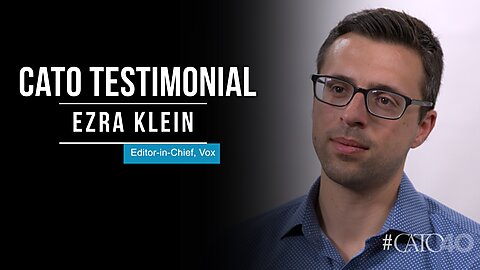Second and third graders designing affordable housing that a family now lives in? That sounds too impressive to be true, but that’s what can happen when children are in the right educational environment, like Limestone Community School in Lawrence, Kansas, which opened in 2021.
Madeline Herrera founded Limestone after years of frustration as a public school teacher. “I either have to stop teaching or open my own school,” she recalls telling her husband. “I really did try to stay and problem-solve it, but I saw the system isn’t able to pivot—it’s not designed for that.”
Despite her students really progressing with the project-based learning she used in her classroom, the district wanted her to stop. “They wanted me to conform to the district goals, and the district goals seemed to be more about compliance,” she recalls. “I was doing what I thought would be a district goal because the students were learning so much. But they were asking me, ‘Can you stop teaching that way? Or, if you want to use project-based learning, we’re going to need you to fill out this paperwork four months in advance for each unit.’” That directive left no room for spontaneity or teachable moments.
She’d had enough and decided it was time to put her ideas into action. “One thing that always frustrated me was there’s so much research out there about education, but so little actually trickles down into the classroom. It seems like there are some truths about how we are as people that we could be using to influence our curriculum and our schedule,” she says.
Madeline dove into research to design Limestone’s schedule, curriculum, and philosophy. She found the most productive time of day tends to be around 10 a.m. to 2 p.m., which felt right to her. While parents can drop off as early as 7:30 a.m., the actual school day doesn’t start until 9:30 a.m. Research showing the benefits of deep, uninterrupted play also resonated with her, so the kids have plenty of time for free play—often during the 3–4 hours they spend outside each day.
Her instincts told her the academic day didn’t need to be as long as it was in public schools. There was research that backed her up on that. Plus, talking to homeschool parents and hearing how they were able to complete traditional academics is a much shorter time lined up with what she was seeing elsewhere. “It was interesting to recognize I had to unlearn these things. It makes me so nervous not to teach reading for 2 ½ hours a day because that’s what I had been doing. I didn’t like it. I didn’t like planning for it. The kids lost interest, obviously. And so it was really freeing to take a step away from that,” says Madeline.
The flow of the school day draws on inspiration from Nordic schools. Madeline talked to an educator who taught in the US before moving to Finland and teaching there. He encouraged her to structure learning in 30-minute blocks at the elementary level, interspersing recess or breaks that use a different part of the brain. So Limestone starts with reading for 30 minutes, then a 30-minute recess, then 30 minutes of math, and then moves into project-based learning.
Despite being such a young school, there are amazing things happening at Limestone. A couple of years ago, the first- and second-grade class began talking about affordable housing, which was a growing issue in the community. “Well, just build more homes,” was the solution they offered, Madeline recalls. The teacher explained that it’s more complicated than that, and the kids wanted to learn more.
The project continued into the following year. “We partnered with an architecture firm and they sent five architects out every single week for months and they taught the kids how to design homes,” says Madeline. By the end of the school year, the students—who were in second and third grades by then—had worked with the architects to complete their designs. A local affordable housing coalition donated two plots of land to be used for the students’ designs. “One of the homes is completed and the family moved in in October, and ground is being broken in the spring on the second home,” Madeline adds.
While the housing project is particularly impressive, the idea of community service is woven throughout Limestone. The kindergarten class had a unit on community, and the teacher took them on walking field trips to meet members of their local community. They toured the fire station and talked to firefighters. They met with nearby master gardeners. Every time, the teacher would use the field trips to start discussions on how people contribute to their communities.
The kindergartners decided they also wanted to contribute by creating a mural at a bus stop up the road. “We contacted the Transportation Department and they loved the idea. And then we had some artists in town that came in and helped the kids design it and somebody donated the materials,” Madeline says. “And it’s just really neat to see that the kids understand that they’re community members now—instead of being like, yes, that’s a great idea. We’ll save it for when you turn 18.”
One aspect of her new educational environment that Madeline really appreciates is the collaboration with parents and students. “Before, when a parent would say, ‘Hey, I don’t really like this part of the curriculum or whatever,’ you’re just like, well, that’s what it is. Now, we start with conversations with the parents,” she says. For example, “With adding on 7th and 8th grade, we’ve been in conversation with parents the entire time. ‘What are you hoping that’s going to look like?’ ‘Here are things that we’re thinking—how does that sound to you?’ It’s very collaborative, which is really exciting. And it’s collaborative with the students, too, because they’re the ones that are going to be living it.”
Most Limestone students previously attended public schools that didn’t serve them well. “That’s been a really interesting thing. I think I was pretty ignorant about how many kids had gone through educational trauma,” says Madeline. It sometimes takes students some time to realize that Limestone isn’t as rigid as their former schools. Because reading and math classes are at the same time for everyone, kids can easily attend the class that meets their needs instead of one based solely on their age. Madeline says a side effect of this has been the kids don’t see some as smart and some as dumb—because everyone is moving around, not just a select few.
Teachers are also happy to have more freedom and flexibility. Madeline says one of her new teachers was so disappointed with her experience going through education school because everything was aimed so heavily at public school as if that’s the right way instead of as one option. Working at Limestone’s summer camps opened the teacher’s eyes, and she realized it made more sense than what she learned in her education program. She thinks education schools should focus more on the true nature of learning and the true nature of child development.
Happier students, parents, and teachers. Active community involvement. Real-world application of what they’re learning. By pairing research and understanding of how kids learn with community outreach, Limestone Community School is putting kids on the path to a bright future.























